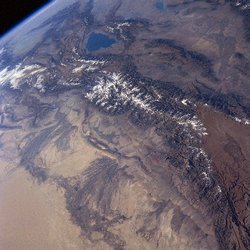
Photo Courtesy: NASA
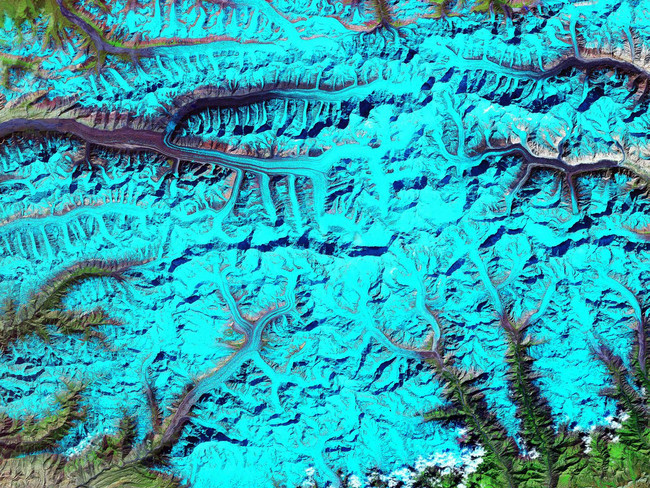
Photo Courtesy: SummitPost.Org
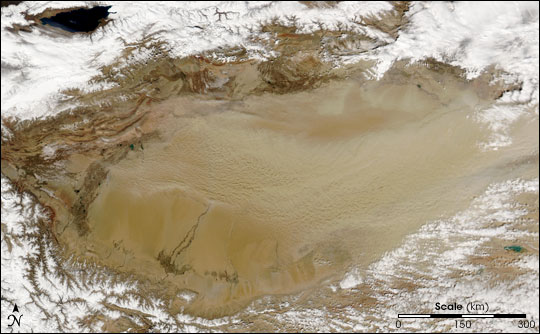
Photo Courtesy: NASA

Map Courtesy: Modified from HUHAI.NET
The Tian Shan (Chinese: 天山; Pinyin: Tiān Shān; celestial mountains), also spelled Tien Shan, is a mountain range located in Central Asia, to the north and west of the Taklimakan Desert in the border region of Kazakhstan, Kyrgyzstan and the Xinjiang Uyghur Autonomous Region of western China (XUAR, henceforth). The range links up with the Pamirs to the southwest. The now widely-used name Tian Shan is a Chinese translation of the original Uyghur name Tengri Tagh (mountains of the spirits). The Tian Shan were uplifted due to the same reasons that the Himalayan orogenic belt was formed: the collision of the Indian and Eurasian plates in the Cenozoic. This is one of the longest mountain ranges in Central Asia, stretching around 2,800 km eastward from Tashkent in Uzbekistan.
The highest peak in the Tian Shan is Pik Pobedy or Pik Pobeda (Victory Peak) which, at 7,439 m or 24,408 ft, is also the highest point in Kyrgyzstan and is on the border with China. The Tian Shan's second highest peak, Khan Tengri (Lord of the Spirits, pictured at left), at 7,010 m or 23,998 ft, straddles the Kazakhstan-Kyrgyzstan border. Mountaineers classify these as the two most northerly peaks over 7,000 m in the world. The Torugart Pass, 3,752 m or 12,310 ft high, is located at the border between Kyrgyzstan and XUAR. The major rivers rising in the Tian Shan are the Syr Darya, Ili River, and the Tarim River.
The forested Alatau ranges, which are at a lower altitude in the northern part of the Tian Shan, are inhabited by pastoral/semi-nomadic tribes speaking Turkic languages: Chiefly, Kyrgyz and Uzbek. The southern parts of the Tian Shan and much of the Xinjiang province of China are inhabited by Uyghurs, whose history goes as far back as 300 BC. By the 8th Century AD, the Uighur had established a powerful and influential empire centred in Mongolia before being defeated and driven out in the 9th century to re-settle in XUAR, and Gansu Province, China. The Uighur remained virtually independent until being subjugated by the Manchu regime in 1759 and, despite several short periods of independence since then, have remained under Chinese rule to this date. The Uyghurs prefer to call their land "Eastern Turkistan", instead of XUAR. Geographically the Uyghur have always been at the very center of eastern and western cultures. Originally nomadic, their settling in the hub of the historic Silk Road routes (which ran through present day XUAR) brought to them the eastern and western influences of China, Europe, North Africa, Russia, India and other areas, all going into a fantastic melting pot that became the Uighur culture of today. According to the 2000 census, XUAR has a population of just over 19 million, of which 6 million reside in just three cities: the provincial capital, Urumqi, nearby Turpan, and the northwestern city of Kashgar (Kashi) (2 million in each city). About 95% of XUAR's population are mainly distributed around oases which make up 3.5% of the total area of Xinjiang.
Uyghur religion has also played a major part in Uyghur culture and has has evolved through several transitions including Shamanism, Manachaeism, Buddhism and even Christianity before Islam became the predominate religion. The Uyghur language (defined by linguists as Altaic Turkic) has 13 dialects. It has many similarities to the Turkish language and is often mistaken for Arabic in it's spoken form. There are no Uyghur/English language dictionaries and very few "Phrase Book" type publications. The Uyghur Language section presents links to some basic English/Uyghur Phrase books and online dictionaries.
References:
Wikipedia, the free encyclopediaUyghur World
United Nations Economic Commission on Asia and Pacific (UNESCAP)
Xinjian Uyghur Autonomous Region (XUAR) (Wikipedia)
Photos & Satellite Images:
Executive Wilderness Programs (EWP) - ExpeditionsBogda Shan Mountain Range (SummitPost.ORG)
Knan Tengri (7005 m) Photos (Risk Online)
Khan Tengri ir Tengi Tag (7005 m) (SummitPost.ORG)
Peak Pobeda or Mt. Tomur (7439 m) (SummitPost.ORG)
Taklimakan Desert - Calm Weather (MODIS/NASA Earth Observatory)
Taklimakan Desert - Central Dust Storm (MODIS/NASA Earth Observatory)
Taklimakan Desert From Space Shuttle (NASA Earth From Space Gallery)
Wikipedia, the free encyclopedia
The Opposite End of China (Blog Pictures)
Road & Topographic Maps:
Xinjiang Uyghur Autonomous Region (XUAR) Road & Tourist Map (The Opposite End of China)Road Map of Xinjiang Uyghur Autonomous Region (XUAR) (HuHai.NET)
Xinjiang Uyghur Autonomous Region (XUAR) Location (Wikipedia)
Wikipedia, the free encyclopedia
Mountaineering:
The Heaven's Mountains (SFT Company)Tien Shan Mountain System (Risk Online)
Climbing Khan Tengri (Tengi Tag) (SummitPost.ORG)
Climbing Peak Pobeda (Mt. Tomur, 7439 m), highest Tien Shan Peak (SummitPost.ORG)
The Bogda Shan Mountains (SummitPost.ORG)
Countries of the Tian Shan:
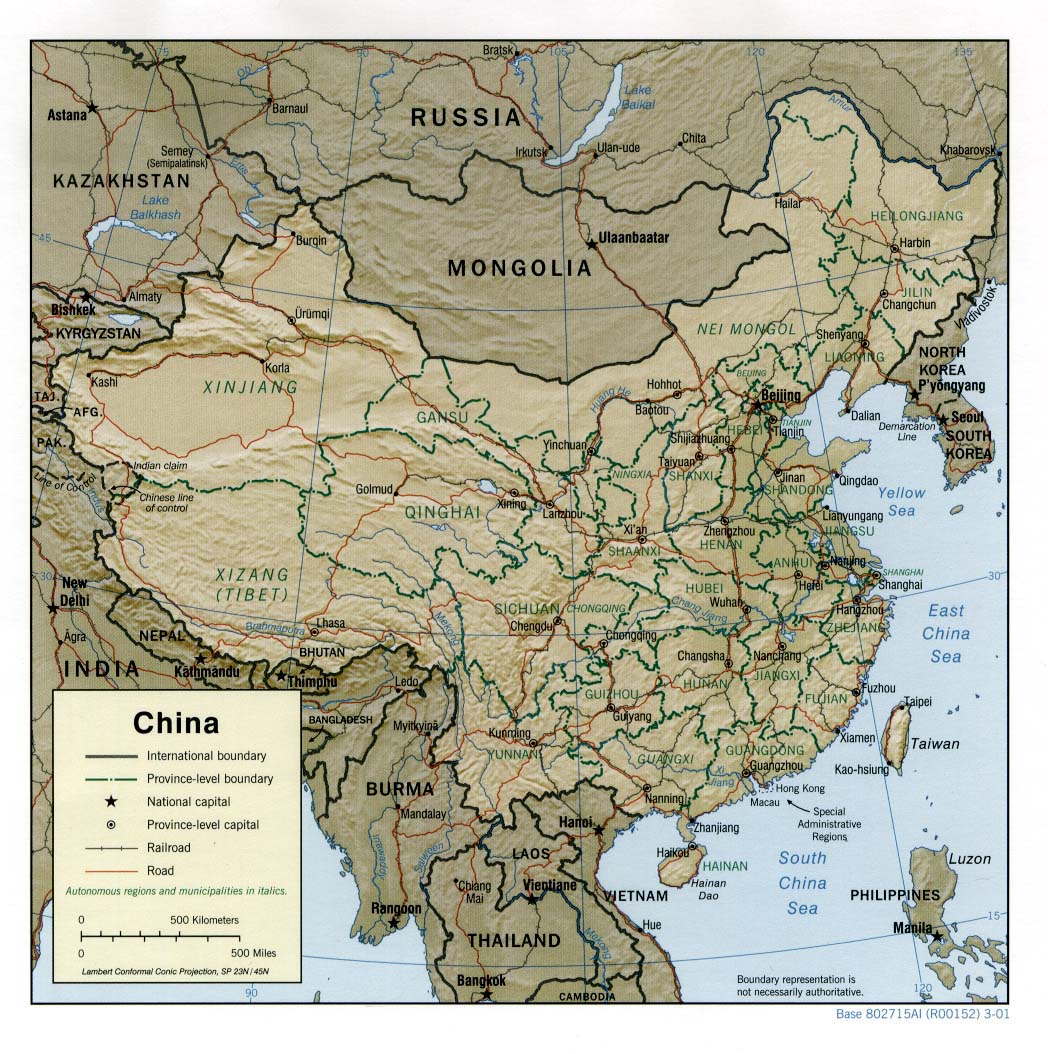
(Map Courtesy: University of Texas)
China & Xinjiang Uyghur Autonomous Region (XUAR):
Xinjiang: Local Economy (UNESCAP)
Xinjiang: Location in China (Wikipedia)
High Resolution Tourist Map of Xinjiang (Muztagh Travels)
Xinjiang (Wikipedia)
The Uyghurs - Wikipedia, the free encyclopedia
The Uyghurs - Independent Tripod Site
Uyghur World
People's Republic of China
Chinese Civilization (Wikipedia)
China (Lonely Planet)
China (CIA World Factbook)
News:
China Today
China Daily
Xinhua News Agency
Uyghur News
Xinjiang Uyghur News Feeds

(Map Courtesy: University of Texas)
Kazakhstan:
Kazakstan (Wikipedia)
Kazakhstan (Lonely Planet)
Welcome to Kazakhstan: Information Site
Kazakstan (CIA World Factbook)
News:
KHABAR - Kazakh News Agency
Kazakhstan (EurasiaNet)
Kazakhstan.COM

(Map Courtesy: University of Texas)
Kyrgyzstan:
Kyrgyzstan (Wikipedia)
Kyrgyzstan (Lonely Planet)
Kyrgyzstan (Central Asia Travels)
Kyrgyzstan (CIA World Factbook)
News:
Kyrgyzstan Radio & Television
Kyrgyzstan (EurasiaNet)
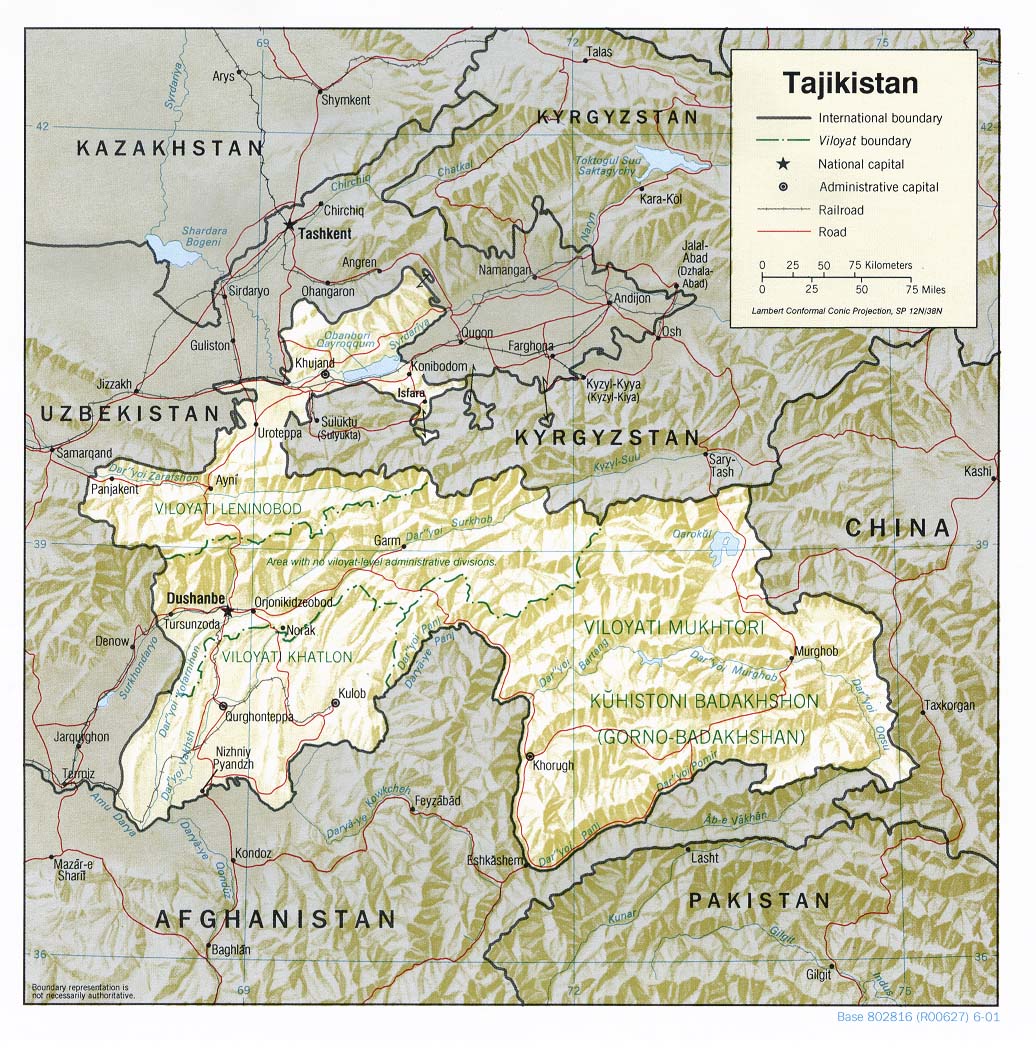
(Map Courtesy: University of Texas)
Tajikistan:
Tajikistan (Wikipedia)
Tajikistan (Lonely Planet)
Travel Tajikistan
Tajikistan (CIA World Factbook)
News:
Tajikistan Development Gateway (Main English News Gateway)
Tajikistan (EurasiaNet)

(Map Courtesy: University of Texas)
Mongolia:
Mongolia (Wikipedia)
Mongolia (Lonely Planet)
Mongolia Official Tourism Site
Mongolia (CIA World Factbook)
News:
Mongolia News Network
Mongolia Today
Tajikistan (EurasiaNet)
Please e-mail Ravi Kanda if you have any suggestions, comments or corrections.